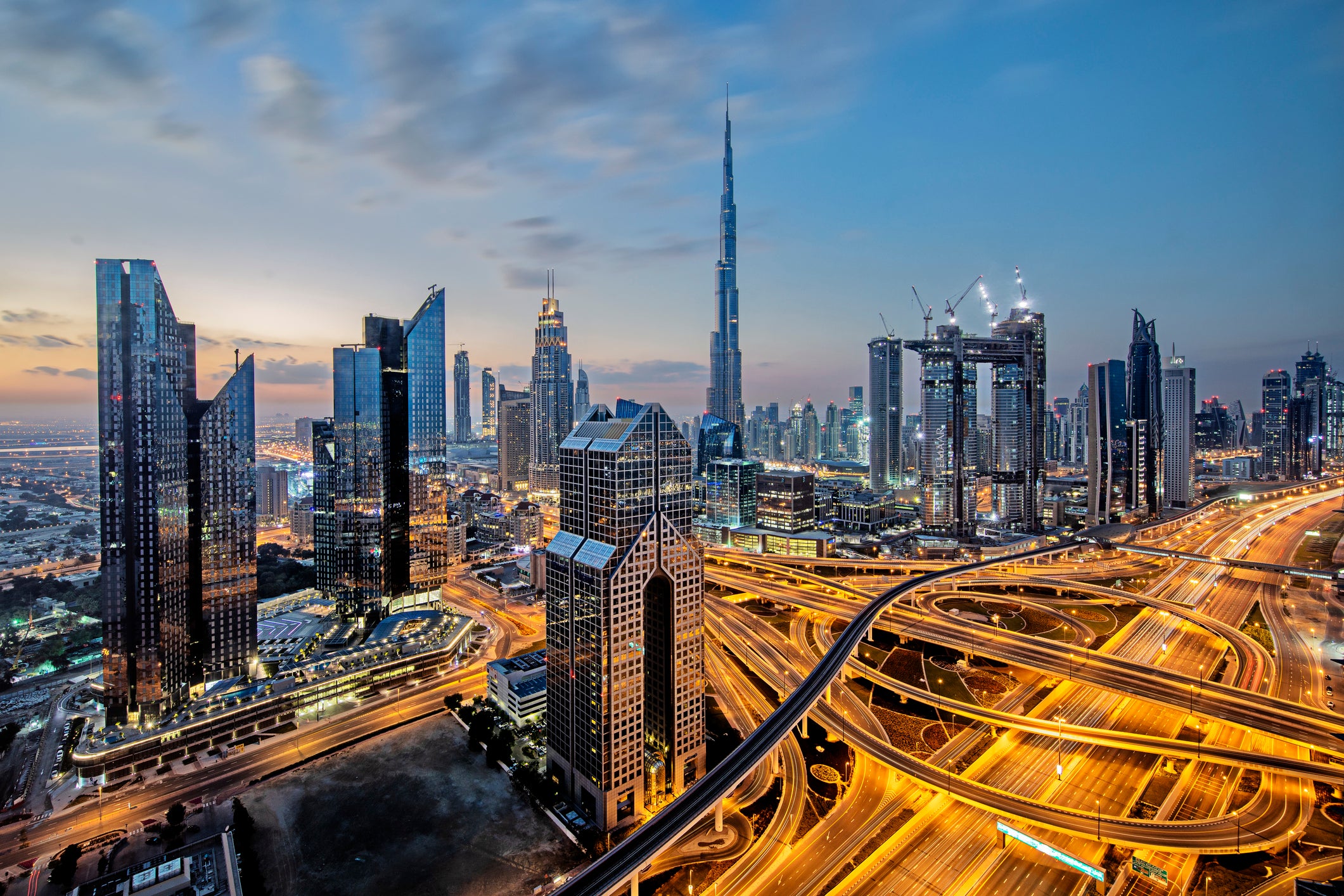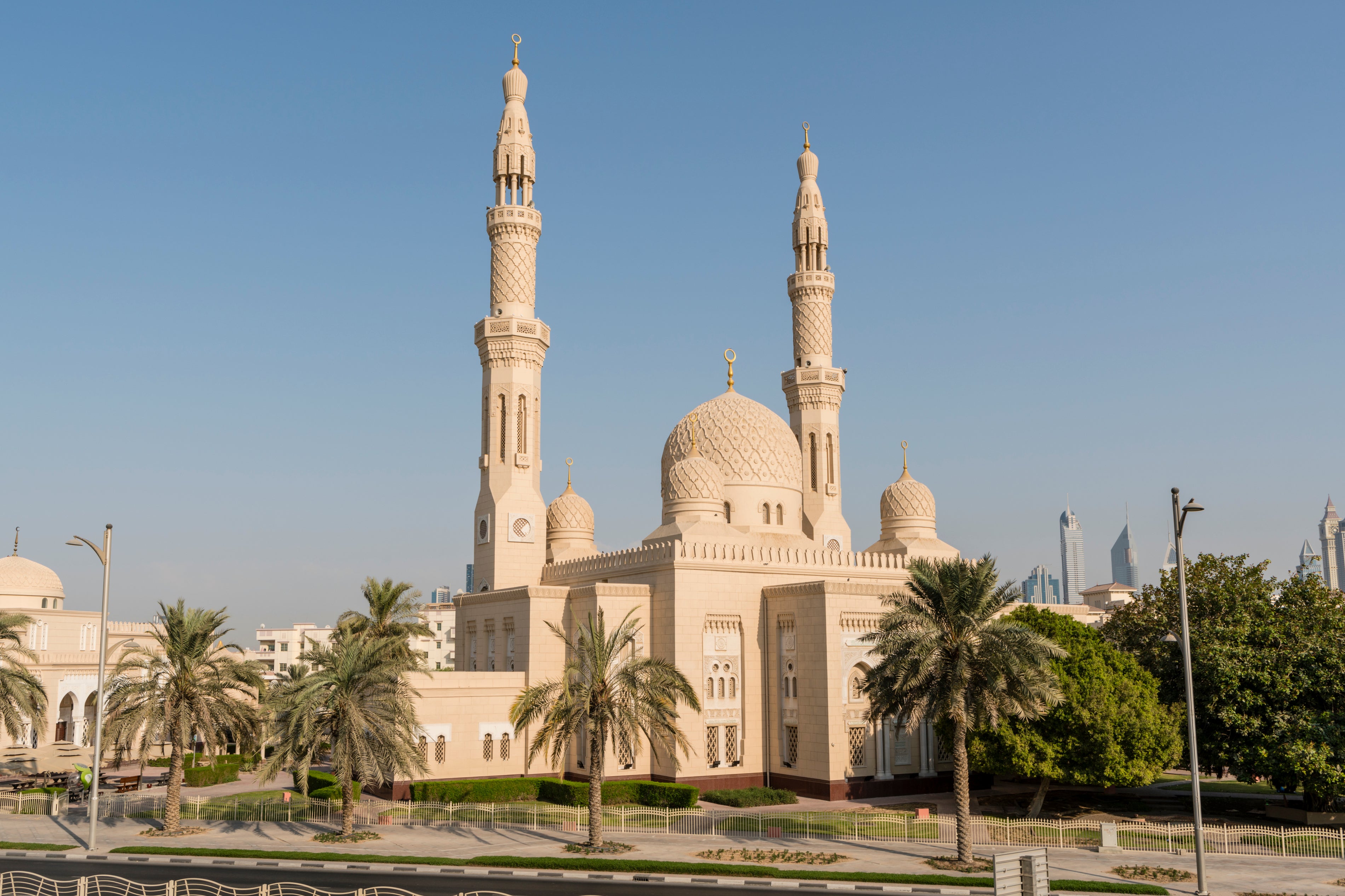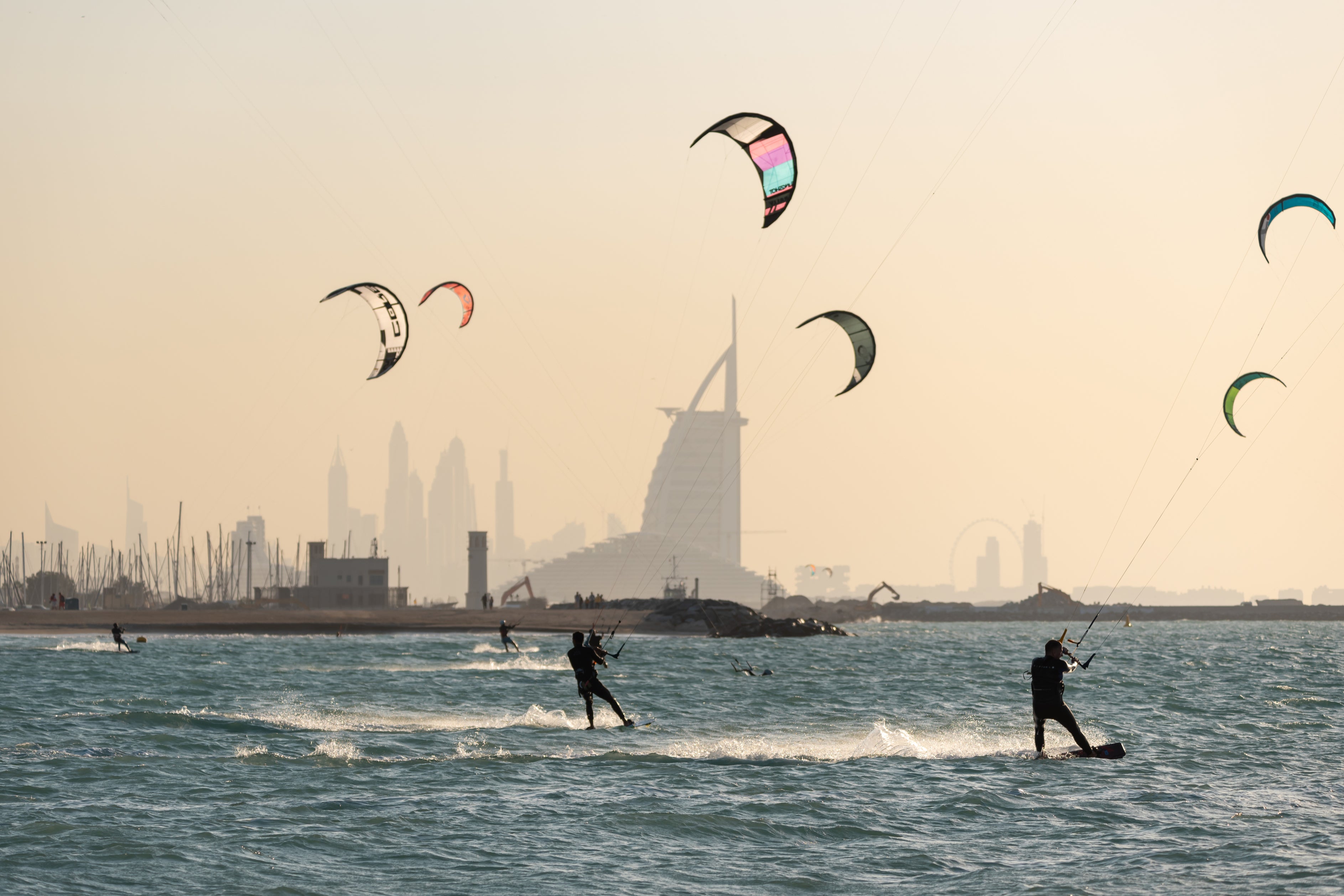The best time of year to visit Dubai – and top things to do in spring
Spring has sprung in Dubai – here are the best things to do and top picks for eating and drinking in 2025

Dubai likes to do things bigger and bolder than most cities. A trip to the City of Gold can encompass everything from fine dining eateries and desert trips to glamorous beach clubs, with the city welcoming 18.72 million visitors in 2024.
The Burj Khalifa and the world’s largest shopping centre, the Dubai Mall, are often on holidaymakers’ lists when visiting the emirate, but there is so much more to see and do, whichever month you choose to visit.
The weather can very much dictate how you spend your time in Dubai: milder, but still warm, winter days bring outdoor adventures. Spring heat is bearable enough to discover the lesser-visited historic landmarks in the city or have a watersports-filled experience in the autumn. Or discover what Dubai has to offer inside its illustrious buildings when the temperatures are scorching in the summer.
As spring approaches, temperatures start to rise but are still pleasant allowing for some cultural exploration of older parts of Dubai. Large attractions, such as the shopping, cultural and entertainment Global Village complex, will stay open until mid-May so visitors can get some time in the outdoor market before it gets too hot.
When is the best time to visit Dubai?
While temperatures at the height of summer can climb above 40C, sweltering weather is fairly common at the end of spring – average temperatures in April are around 26C, with average highs of 32C.
Meanwhile, winter serves up pleasant weather in the low 20s, but December can still reach up to 26C – meaning the city is a great winter escape from colder European temperatures. Autumn will deliver you enviable temperatures for the time of year, with daily averages sitting at 29C in October.
If you’re wondering which season is ideal for a visit, plus some of the best things to do and where to stay, here’s everything you need to know about Dubai throughout the year.
Read more: These are the best family-friendly hotels in Dubai
Spring

Things to do
With the weather being slightly cooler than in the summer months, this season provides the perfect opportunity to get to know the historic side of Dubai. With its extravagant sprawling cityscapes, world-record-breaking towers and futuristic infrastructure, it’s easy to get lost in a world of glossy buildings and luxurious ways of life. However, the emirate has a surprising amount of culture for a place known for its hyper-modern metropolis. May can get hotter with average temperatures at 31C but March and April stay a bit cooler in the mid to high 20s, making it a great time to explore the charm of Dubai’s heritage district along the bank of the Creek, once the entrance to the Gulf’s most successful pearl diving port.
Discover Arabian history at the Al Fahidi Historical Neighbourhood, with its sandstone wind towers and houses. There are walking tours, museums and demonstrations by local craftsmen. A trip to Dubai’s souks, Arab marketplaces selling everything from gold to spices to textiles, will allow visitors to experience centuries-old traditions and craftsmanship.
To discover more of Dubai’s Islamic heritage and culture, the grand Jumeirah Mosque, notable for its two towering minarets, offers daily guided visits including authentic Emirati refreshments such as Arabic coffee, tea, dates, water, and luqaimat. While the mosque was built to accommodate up to 1,500 worshippers, it encourages non-Muslim visitors to come and learn about traditions, customs and local cuisine. The mosque is open every day other than Friday, and modest dress is preferred, with women required to bring their own head cover/scarf.
Read more: Best luxury hotels in Dubai
Eat and drink
To get a taste of Dubai’s local food scene away from the fine dining razzle-dazzle, book a tour with Frying Pan Adventures, which will take you on a trip through some of the city’s oldest communities. The guide will tell you unique local stories deep-rooted in the area before the first skyscraper was even erected. From AED435 (£94), you will experience humble dishes and diverse culinary influences as you navigate through the aromatic alleys of the souk before hopping on a boat to cross the creek.
The Michelin Guide recommends Al-Fanar, found on the banks of the creek. It celebrates Emirati cuisine by using age-old recipes, local ingredients and fresh seafood to create dishes that can be enjoyed within a rustic interior.
Dubai’s oldest watering holes are not actually that old by our standards, but if you are missing a slice of home, there are a few British and Irish-themed pubs that opened in the 1990s, influenced by the expat community. Irish pub Fibber Magee’s offers a homely space to sink a Guinness or listen to folk music. Or head to Harvesters for fish and chips and a lager on draught.
Where to stay
When in Dubai, it’s hard to resist a taste of the glamourous lifestyle at grandiose hotels and awe-inspiring suites, but for those who want to experience Dubai on a budget, or who are keen to explore the older Emirati communities, a stay at the Al Seef Heritage Hotel Dubai, Curio Collection by Hilton may be just the ticket. Located in the heritage district of Al Seef and overlooking Dubai Creek, this hotel is spread across 10 traditional Arabian homes (bayts) that celebrate authenticity while providing a comfortable stay. The hotel focuses on providing guests with contemporary Arabian hospitality, from welcoming with Arabic coffee to celebrating the traditional flavours of the region in the Sabaa cafe.
Read more: Best cheap hotels in Dubai for central locations and beach views
Summer

Things to do
While the heat may be sweltering in the summer months, hotel and attraction prices stay rather cool compared to the peak season. With all of Dubai's ultramodern grandeur, some of the best experiences are actually held inside the impressive architecture. With the sun beating down outside, seek out Ski Dubai for snowsports, or maybe head to IMG Worlds of Adventure for Dubai’s largest indoor theme park with immersive worlds and rides. Be transported into a vibrant universe with touch technology and high-tech sound at AYA, an immersive entertainment experience. Or if you are a football fan, head over to Real Madrid World, filled with more than 40 attractions all centred around the beautiful game.
The city also has some of the world’s best spas. For a luxury Arabian hammam experience, set your eyes upon the Atlantis, The Palm for Awaken Spa, a peaceful retreat offering bespoke treatments, world-renowned products and advanced technology. Or book a session at the Saray Spa at JW Marriott Marquis Dubai for group visits such as pamperings on a girls’ day or a spa journey for couples in a private treatment room.
While enjoying a day out in Dubai in the hottest hours, ensure you stay safe in the sun by regularly applying sunscreen, wearing a hat, sunglasses and light, breathable clothes. A long-sleeved shirt will also help you stay protected against the rays. If you do spend time outside, it is essential you drink lots of water to stay hydrated.
Eat and drink
After a day of indoor fun, heading to a restaurant with stunning views of the towering skyscrapers is a must to make the most of the unique landscape. One favourite is the elegant Michelin-starred Al Muntaha, found on the 27th floor of the iconic Jumeirah Burj Al Arab serving fine French dining and unmissable views across the Gulf and the Palm.
For those seeking stunning scenery without breaking the bank, book a table on the terrace at the Italian restaurant Fi’ila, the region’s first female-led restaurant. It offers a serene setting to relax in while sharing a few plates.
If the hot climate is proving a bit too much by the evening, with temperatures still in the mid-20s on summer nights, seek refuge in one of the city’s trendy speakeasies, such as the hip and vinyl-spinning Honeycomb HiFi in Downtown Dubai, or stay out for an all-nighter at Ly-la, a lavish lounge draped floor-to-ceiling in Bedouin textiles.
Where to stay
Dubai has an exceptional choice of places to stay, from cosy boltholes in the old town to grand paradise getaways. If you are seeking a luxury holiday, but want to pay a little less in the low summer season, treat yourself to a room at the Jumeirah Beach Hotel. Designed for families, there is unlimited access to the Wild Wadi Waterpark to cool off, along with 10 restaurants, five temperature-controlled pools and a private beach to enjoy. The hotel’s Talise Spa also provides wellness rituals, holistic treatments and spa products to try during your stay.
Read more: Dubai laws you need to know before visiting
Autumn

Things to do
If you’re travelling to the City of Gold in the autumn months, the weather will be balmy but not as unbearably hot as the middle of the summer. Temperatures sit around 29C on average, with the hottest parts of the day reaching 35C. If an active getaway is calling you, but the mid-afternoon heat is too much in the desert, the best solution is to take in a watersport or two.
Dubai is rich in obscure watersports, such as cruising past the city’s famous landmarks in sports car-like luxury vehicles with Jet Car Dubai, or maybe gaining the power of flight on a flyboard, hoverboard or jetpack around the marina.
Kitesurfing is also popular here. Head down to the aptly named Kite Beach to meet with Kitesurf School Dubai for an unforgettable experience riding the breeze as the sun reflects off the sky-blue waters of the Gulf. Kids and adults alike should also stop by Aquaventure World in Dubai’s iconic Atlantis, The Palm, for a day ticking off each of its 105+ slides.
If “Dubai” and “active” are two words that don’t mix for you, there is an array of luxury beach clubs to discover so you can work on the tan. For a high-end experience, laze around at Summersalt at Jumeirah Al Naseem, a luxury club complete with a private stretch of soft sand, beachside dining and Latin-American cuisine. For an adults-only club, head to the boho-chic Ginger Moon ‘no beach’ club for handcrafted cocktails around the pool.
Eat and drink
Keeping by the water, there is an abundance of eateries and foodie hotspots to indulge in. Check out the Aussie-themed Byron Bathers Club, transporting you to a Gold Coast surfers’ paradise for an extravagant seafood tower made up of oysters, prawns and ceviche while soaking up the sun on the beach.
The nightlife at the water’s edge is nothing short of excessive too, with well-known bars such as Above Eleven on the Palm Jumeirah serving cocktails inspired by different locations at its rooftop venue, with resident DJs playing until the early hours. Or sip a sundowner at the romantic Jetty Lounge on sophisticated beachside tables, enjoying ocean-inspired cocktails as the waves roll in on the shore.
Where to stay
For families seeking an action-packed holiday on the Gulf, the Sofitel Dubai The Palm resort and spa provides a whole menu of water activities to submerge in. Partnering with tour operator Seamocean, for an extra fee it gives guests access to guided jet ski tours, sunset speedboat excursions, underwater sea scooters, scuba diving training and yacht charters – the list goes on. The double bedrooms have wood finishes, rain showers, and a private balcony on which to unwind after a day of adventures.
Winter

Things to do
For those who have only known the winter months to be bitterly cold and harsh, it is hard to believe that winter is Dubai’s high season, with average temperatures between 19C and 25C. As the weather gets a little cooler by UAE standards, the city attracts more visitors than at any other time of the year. While this means Dubai will be busier, there are also plenty of outdoor activities going on, from riding dune buggies and desert safaris to relaxing at Dubai Islands Beach or even playing a round at the Emirates Golf Club.
One of Dubai’s top attractions between October and May is the Global Village, featuring stores, a funfair, food and entertainment celebrating more than 90 cultures across the world. Families visiting Dubai can wander through the different pavilions representing all corners of the globe – for example, sampling Vietnamese street food, then browsing Persian rugs, before watching a Bollywood flash mob perform.
Eat and drink
Winter in Dubai calls for al fresco dining, and there are plenty of scenic and rather unique ways of doing so. Take a trip out on a camel shuttle to the desert at the eco-friendly Sonara Camp, for a three-course dinner and a cocktail under the stars. Or maybe opt for British afternoon tea in a faux hot air balloon on Jumeirah Al Qasr’s fifth floor, delivering unmatched views of the Gulf and Jumeirah Burj Al Arab without leaving the ground.
Dubai’s restaurants – like so much else in this city – are brash and glitzy, including exquisite fine dining, culinary masterpieces and Michelin-starred joints. For new restaurants head to The Link, a three-storey cantilevered building, suspended in mid-air, which opened earlier this year. It is home to concept restaurants boasting French opulence at La Dame de Pic, Japanese dining at Sagetsu, or reimagined street food at StreetXO.
Where to stay
Take the opportunity to immerse yourself in Dubai’s great outdoors with an activity-filled excursion into the mountainous region of Hatta. There’s plenty to do, including hiking, kayaking, paragliding, or maybe even launching yourself from giant slides straight into a plunge pool. After a packed day, Hatta Resorts offers caravans, dome tents that come with a private pool, and a lodge complete with a fire pit and terraces from which to watch the sunset.
Read more: Best hotels in Dubai
Join our commenting forum
Join thought-provoking conversations, follow other Independent readers and see their replies
Comments
Bookmark popover
Removed from bookmarks